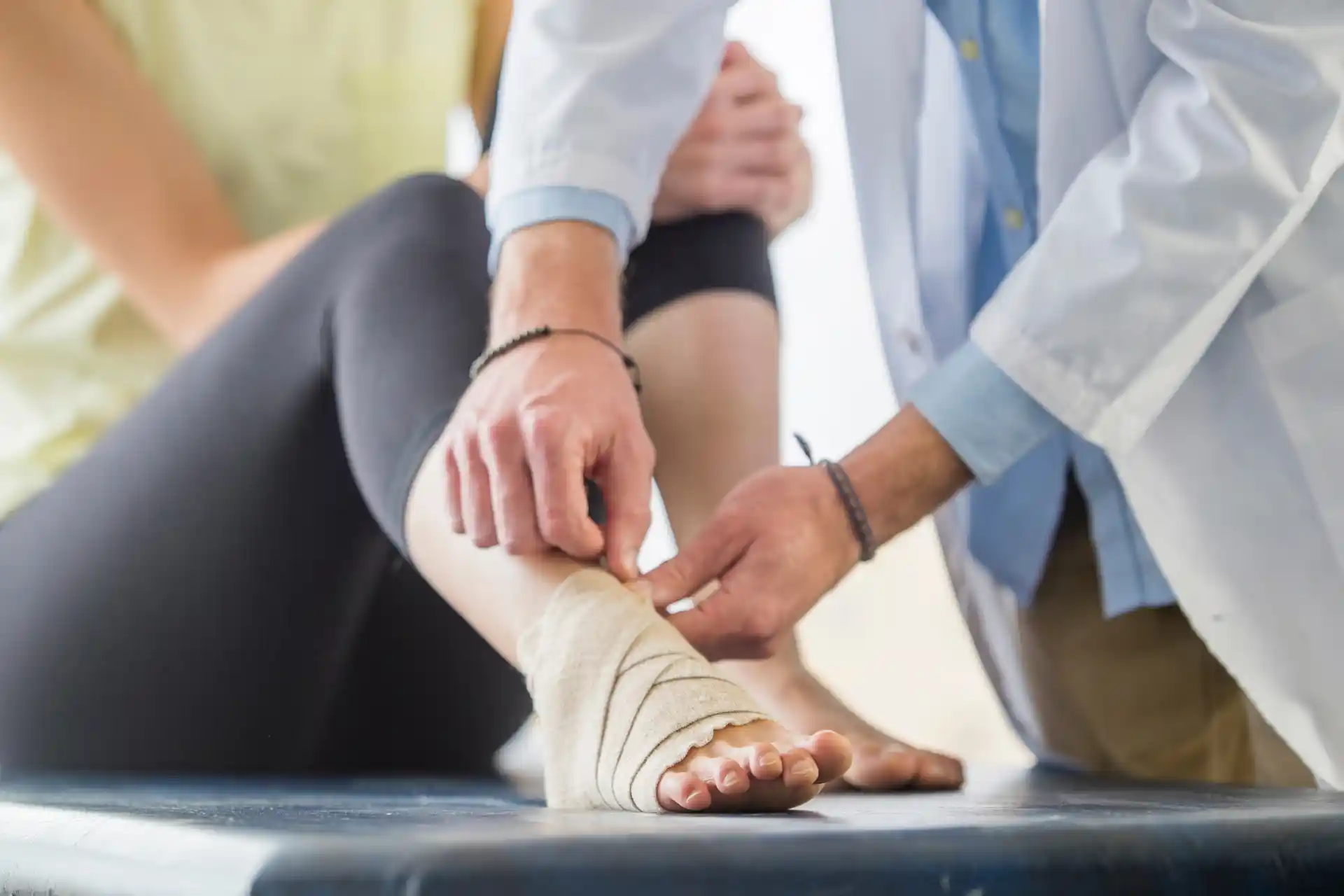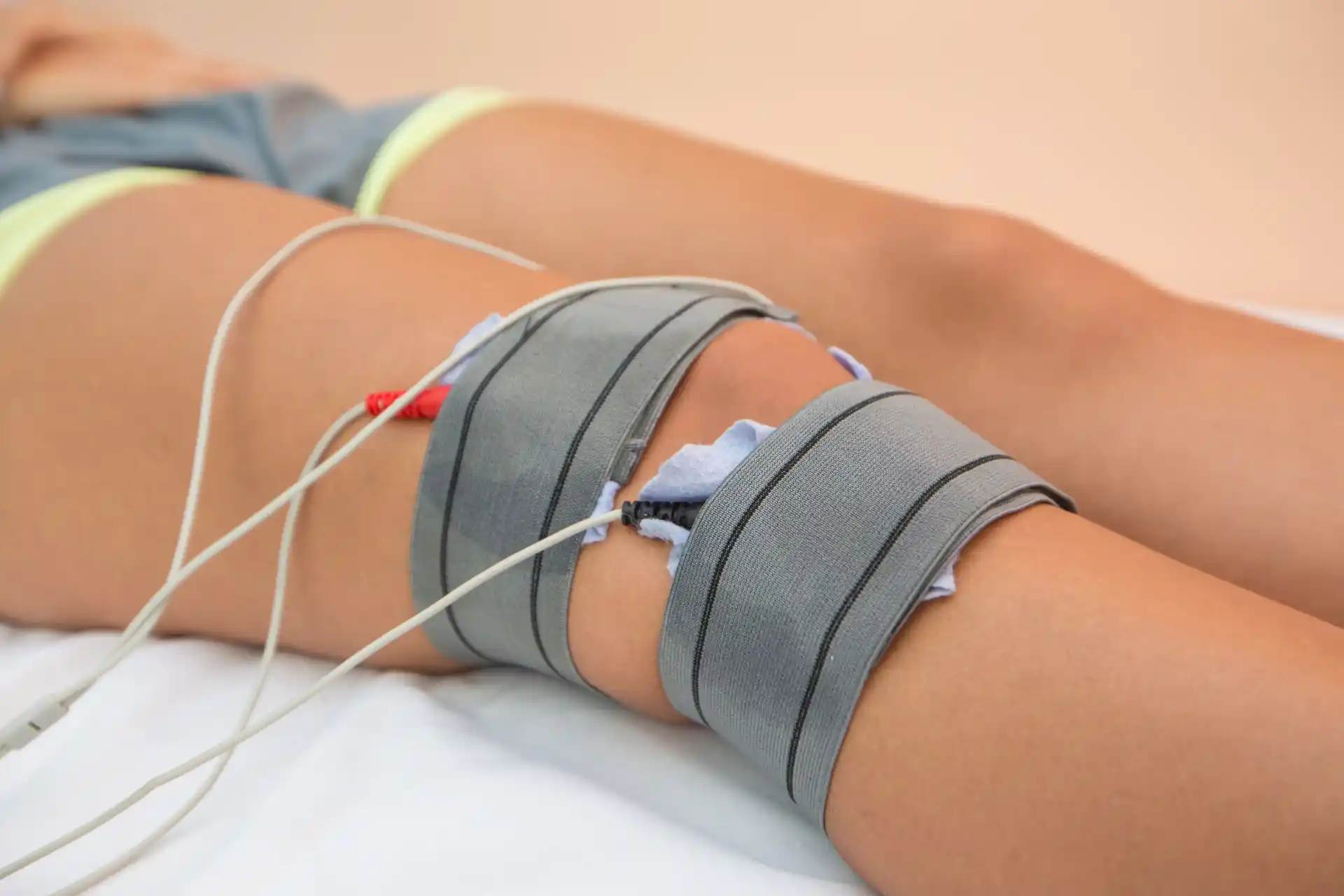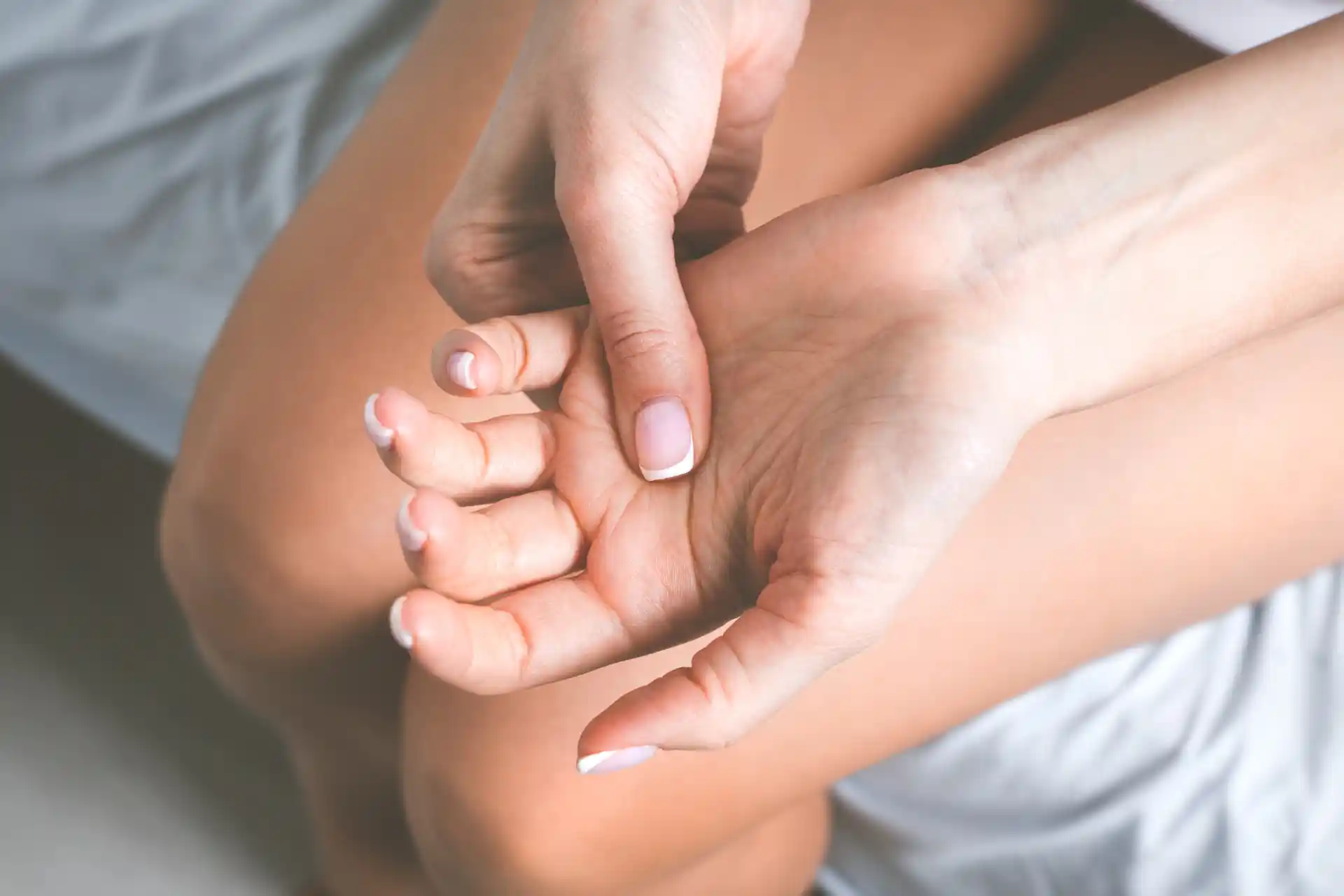Understanding Ligament Injuries
Ligament injuries, often referred to as sprains, can be a source of significant discomfort and immobility. Understanding the nature of these injuries is the first step towards effective treatment and recovery.
Definition of Ligament Injuries
Ligaments are bands of strong, elastic tissue that connect bones to each other, contributing to the stability and flexibility of your joints. When you experience a ligament tear, it means that these fibrous tissues have been stretched or strained beyond their normal capacity. Ligament injuries are categorized into three grades, reflecting the severity of the tear:
- Grade 1: A mild ligament tear, where the ligament is stretched but not severely damaged.
- Grade 2: A moderate ligament tear with partial tearing.
- Grade 3: A complete ligament tear, also known as a rupture, where the ligament is split into two pieces.
These grades help medical professionals determine the appropriate treatment path for your recovery. For a more in-depth look at the grading system and symptoms, you can read about ACL tear symptoms and MCL injury symptoms.
Common Causes of Ligament Tears
Ligament tears are often the result of trauma or an abrupt impact that forces a joint beyond its functional range of motion. Some of the typical scenarios leading to a ligament tear include:
- Twisting a joint, such as when you twist your ankle or knee
- Sudden stops and changes of direction during sports
- Impact from falls or collisions
Certain activities and sports are more likely to result in these types of injuries due to their high-impact nature and the frequent, rapid directional changes required. Sports such as football, basketball, tennis, and soccer are common culprits. For instance, an ACL tear often occurs in these settings and is a well-known sports injury affecting the knee joint.
The risk is not limited to sports; everyday activities like walking or running can also lead to ligament injuries if you land awkwardly. This might result in a sprained ankle or a torn ligament in the foot, highlighting the vulnerability of weight-bearing ligaments to tears.
Understanding the ways in which ligament injuries occur can help you take preventive measures to protect yourself. While not all accidents can be avoided, being aware of the common causes and engaging in strengthening exercises may reduce the risk of a ligament tear. For those looking to prevent or recover from a ligament injury, exploring comprehensive treatment and rehabilitation strategies is key.
To learn more about these methods, consider reading about knee ligament injury treatment and exploring how to tape a sprained thumb for support during recovery.
Diagnosing Ligament Injuries
When you suspect a ligament injury, it is crucial to understand the diagnostic process to ensure proper treatment and recovery. The diagnosis of a ligament tear involves a multi-step approach, including a thorough physical examination and various tests to assess the extent of the damage.
Physical Examination and Tests
The initial step in diagnosing a ligament injury is a comprehensive physical examination. Your healthcare provider will check for signs such as swelling, tenderness, restricted range of motion, and overall joint function. They might also perform specific maneuvers, like the Lachman test, which is considered the most accurate way to identify ACL injuries (NewYork-Presbyterian).
In some cases, additional tests may be required to confirm the diagnosis and rule out other conditions. These tests can include:
- X-rays: To exclude bone fractures.
- Magnetic Resonance Imaging (MRI): Offers high accuracy in detecting ligament tears and can differentiate between partial and complete ruptures.
- Ultrasound: Useful for assessing soft tissue injuries.
- Arthroscopy: A minimally invasive surgical procedure to directly visualize the inside of the joint.
Severity Grading and Diagnosis
Ligament sprains and tears are graded based on the severity of the injury:
The prognosis for ligament tears with the appropriate treatment is generally positive. Lower-grade sprains (grade I and II) often recover within three to eight weeks, allowing you to return to normal activities with full mobility. More severe injuries (grade III), especially those requiring surgical intervention and rehabilitation, may take much longer.
For specific injuries, such as ACL tears, the treatment plan may vary depending on the severity. In some instances of partial ACL tears, nonsurgical treatment may be highly effective. However, severe ACL injuries rarely heal by themselves and might necessitate minimally invasive arthroscopic surgery, particularly when dealing with hand and wrist ligament problems.
After a ligament injury is graded and diagnosed, a tailored treatment plan is developed to address your specific needs. This plan may include a combination of rest, physical therapy, and possibly surgical intervention for more severe or complete tears. Understanding the diagnosis process for a ligament tear is the first step towards a successful recovery and return to your regular activities.
Treating Ligament Injuries
When you're dealing with a ligament tear, it's crucial to understand your treatment options. Treatment can vary greatly depending on the severity of the injury, with some cases requiring surgical intervention and others healing with non-surgical methods.
Non-Surgical Treatment Options
For less severe ligament tears, such as grade 1 and grade 2 injuries, non-operative treatments may be sufficient. These treatments aim to reduce pain, swelling, and encourage the healing of the ligament tissue. A combination of the following non-surgical therapies may be recommended:
- Bracing: Supporting the injured area with a brace helps to stabilize the injury, preventing further strain and allowing the ligament to heal.
- Physical Therapy: Engaging in physical therapy can restore function, reduce pain and swelling, and strengthen muscles around the injured ligament.
- Heat Therapy: Applying heat can improve blood flow to the area and reduce stiffness.
- Medication: Over-the-counter or prescription medications may be used to manage pain and reduce inflammation.
Patients should seek prompt medical attention for ligament injuries, as mild tears may heal on their own, while more serious tears will require professional care. For insights into specific symptoms and injuries, such as an ACL tear or a sprained ankle, visit the linked articles.
Surgical Interventions and Procedures
Surgical treatment becomes necessary when a ligament is completely torn or the injury is severe. Surgery aims to repair or reconstruct the damaged ligament. The Mayo Clinic outlines that ACL injury treatment, for instance, might include surgery followed by rehabilitative therapy to restore knee function and strengthen the muscles.
Here's what you might expect if surgery is needed:
- Diagnostic Imaging: A doctor may use X-rays or an MRI to assess the extent of the injury and determine if there are any fractures or the need for surgery (WebMD).
- Surgical Repair: If a ligament is completely torn, surgical repair will be necessary. This may involve stitching the torn ends together or reconstructing the ligament using grafts.
- Rehabilitative Therapy: Post-surgery, physical therapy is crucial to regain strength and mobility.
The decision for surgery often depends on the patient's activity level, the degree of the injury, and the presence of other knee injuries. For detailed information on different types of ligament injuries and their treatments, such as medial collateral ligament injury symptoms or torn ankle ligament, refer to the respective articles.
Whether your ligament injury requires surgical or non-surgical treatment, the goal is to return you to your pre-injury level of function and prevent future injuries. Always follow the guidance of a sports medicine specialist or orthopedic doctor to ensure the best possible outcome for your ligament tear.
Recovery and Prevention Strategies
Upon sustaining a ligament injury, it’s essential to follow a structured rehabilitation plan and employ strategies to prevent future injuries. Recovery times vary based on the severity of the injury, but with the right approach, you can work towards restoring full functionality.
Rehabilitation and Recovery Timeline
Rehabilitation is a critical component in the healing process of a ligament tear. The recovery timeline for ligament injuries can range from a few weeks to several months, depending on the extent of the damage:
During rehabilitation, you should focus on gradually regaining mobility, strength, and stability. It's important to adhere to the recovery plan prescribed by your healthcare provider, which may include physical therapy exercises, rest, and, if necessary, surgery. Mild tears may heal with non-operative care, while moderate to severe tears often require the attention of a sports medicine specialist or orthopedic doctor.
Seek RELIEF®
The RELIEF® procedure is a scientifically-backed approach designed to address the underlying issues of ligament injuries, by specifically targeting damaged fascia surrounding the area of injury and discomfort. The treatment combines ultrasound guidance and hydrodissection techniques to help release fascial adhesions, reduce inflammation, and promote scar tissue healing, in order to help free a potentially compromised ligament and address injury symptoms.1,2,3
To learn how RELIEF® can help manage your ligament injury symptoms, without the need for steroids, medication, surgery, anesthesia, or post-procedure immobilization, contact us today to schedule a consultation.
Preventing Future Ligament Injuries
Preventing future ligament injuries is just as crucial as the initial recovery. Here are proactive steps you can take to minimize the risk of re-injury:
- Strengthening Exercises: Focus on exercises that enhance the strength of your legs, hips, and core muscles. This can help improve your stability and reduce the chances of injury.
- Proper Technique: Training programs that teach proper jumping and landing mechanics can be especially beneficial in preventing injuries such as ACL tears (Mayo Clinic).
- Equipment Check: Ensure that you use appropriate footwear and protective gear that offer adequate support and cushioning for your activities.
- Listen to Your Body: Pay attention to signs of fatigue and discomfort, as pushing through pain can increase the risk of ligament damage.
By incorporating these preventative measures into your routine, you can not only protect your ligaments but also enhance your overall physical performance. Remember, maintaining a proactive approach to your health can greatly contribute to your long-term mobility and athletic endeavors.
To learn how RELIEF® can help manage your ligament injury symptoms and accelerate your injury recovery, contact us today to schedule a consultation.






.svg)